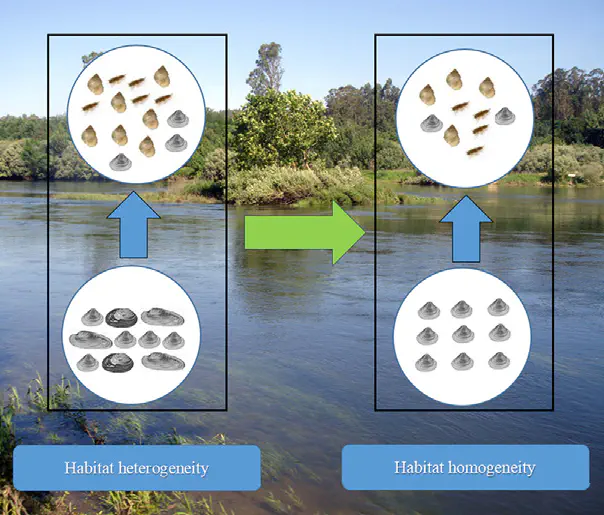Physical legacy of freshwater bivalves: Effects of habitat complexity on the taxonomical and functional diversity of invertebrates

Abstract
Bivalves may play a major role in structuring aquatic communities. This may be especially relevant in aquatic communities dominated by non-native invasive bivalves, which can contribute to the increase of habitat homogenization. In this study, we assess how habitat homogenization, through the reduction of empty bivalve shells identities, influences the macroinvertebrate assemblages. Towards this end, a manipulative experiment with the empty shells of two native (Potomida littoralis and Unio delphinus) and one non-native (Corbicula fluminea) species was performed. Seven treatments were prepared, three of them consisting of homogeneous substrates using shells of one species, and four of them consisting in heterogeneous substrates using more than one species. The associated fauna colonizing different treatments was analyzed through taxonomic and trait-based approaches. Our results showed that the substrate complexity influenced the density of macroinvertebrates, with the heterogeneous treatments significantly yielding more dense assemblages. Also, the trait patterns differed among the levels of habitat heterogeneity, influencing mainly organisms that feed on microphytes of both small and big sizes, that inhabit areas with slow to moderate water flow, and that have short and long live cycles. Further, the functional diversity was not influenced by the substrate heterogeneity. Therefore, the habitat homogenization, through the accumulation of non-native C. fluminea empty shells in the river bottom, did not affect the functional diversity of the macroinvertebrate assemblages.